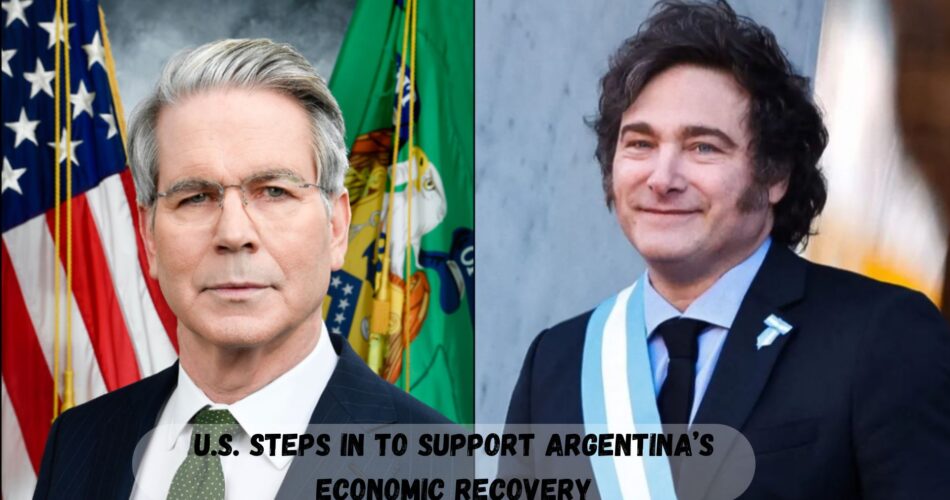The United States has begun implementing a $20 billion financial rescue package for Argentina, aiming to stabilize its collapsing currency and back President Javier Milei’s market reform program. The move, announced by U.S. Treasury Secretary Scott Bessent on social media this week, marks one of Washington’s largest direct interventions in a foreign economy in recent years.
Bessent said the U.S. would purchase Argentine pesos on global markets “to restore confidence and ensure economic stability.” The announcement briefly strengthened the peso and lifted Argentine bond prices, but also triggered domestic criticism in the U.S. over using taxpayer funds for a foreign bailout amid ongoing federal spending cuts.
Why the U.S. Is Backing Argentina
According to Secretary Bessent, Argentina’s reform plan is of “systemic importance” to U.S. interests. He emphasized that a stronger and more stable Argentina would help “secure the Western Hemisphere” and reduce regional economic instability.
“Washington will take whatever exceptional measures are warranted,” Bessent said in his statement.
President Javier Milei, who took office promising to overhaul Argentina’s crisis-hit economy through free-market reforms and deep budget cuts, welcomed the U.S. support. He thanked both Bessent and former U.S. President Donald Trump, calling the United States and Argentina “the closest of allies.”
Background: Argentina’s Economic Crisis
Argentina is facing one of its worst financial crises in decades, with:
- Inflation: Over 250% annually, among the highest in the world.
- Currency Collapse: The Argentine peso has lost nearly 70% of its value this year.
- Debt Burden: External debt exceeds $400 billion, with ongoing talks with the International Monetary Fund (IMF).
- Poverty: More than 55% of Argentines are living below the poverty line.
President Milei’s administration has introduced sweeping reforms, including:
- Cutting public subsidies and government jobs
- Deregulating labor and trade laws
- Proposing the dollarization of the economy to end hyperinflation
Criticism Inside the United States
The bailout has drawn bipartisan criticism in Washington. Lawmakers from both parties questioned why the U.S. is spending billions abroad while facing domestic challenges such as:
- Rising national debt (over $35 trillion)
- Cuts to social and infrastructure programs
- Public concerns about foreign intervention costs
Economists are divided. Supporters argue that helping Argentina could stabilize South America’s second-largest economy, benefiting U.S. trade and security. Critics say the move risks political backlash and may not succeed without deeper structural changes in Argentina.
Market Impact
Following the announcement:
| Indicator | Before Announcement | After Announcement | Change |
|---|---|---|---|
| Argentine Peso (per USD) | 1,520 | 1,380 | +9.2% |
| Buenos Aires Stock Index | 1,040 pts | 1,115 pts | +7.2% |
| 10-Year Bond Yield | 18.7% | 16.9% | ↓ 1.8 pts |
However, analysts caution that these gains could be short-lived unless the government sustains fiscal reforms and inflation control.
What Comes Next
The U.S. Treasury has not disclosed how long the rescue program will last or how the funds will be deployed. Reports suggest that coordination with the IMF and World Bank may follow to create a broader support framework for Argentina.
President Milei’s administration is expected to unveil new monetary policies in the coming weeks to reinforce the peso and attract foreign investment.
If successful, the rescue could mark a turning point for Argentina’s economic recovery — and redefine U.S. influence in Latin America.
Summary:
The U.S. has launched a $20 billion plan to buy Argentine pesos and stabilize the economy, supporting President Javier Milei’s bold reforms. While the initiative strengthened markets temporarily, it has also sparked political debate in Washington. The success of this rescue effort will depend on Argentina’s ability to sustain reforms and restore investor confidence in the months ahead.

